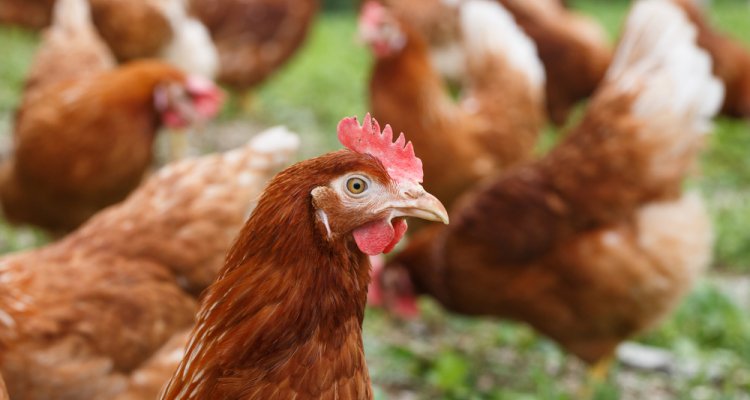
Showcase
Smart systems improve welfare of laying hens and pigs
Animal welfare on farms has improved over the past decade. For example, laying hens and pigs now have more space to scratch and snuffle about in their enclosures. However, living in large groups does lead to aggressive behaviour, such as pigs biting each other’s tails or chickens pecking out each other’s feathers. A new system based on artificial intelligence has been designed to improve animal welfare.
There has been little attention to date for the social behaviour of pigs and laying hens in the industry. This is because studying the behaviour of large groups of animals is very labour intensive. The researchers of the Animal Breeding and Genomics and Adaptation Physiology chair groups are collaborating with Eindhoven University of Technology and Utrecht University to develop a system that automatically monitors the behaviour of pigs and chickens based on artificial intelligence.
“The system will use an algorithm, cameras and sensors to identify aggressors and victims, recognise individuals, and monitor how they move around in their enclosure,” explains assistant professor Piter Bijma. “This will help the farmer decide when to intervene in case of behavioural problems. For example, the system could provide the farmer with an alert in case of smothering, a situation where chickens crowd together in a pile and the hens at the bottom suffocate. If the farmer intervenes on time they can prevent chickens from dying, pig farmers can also respond more quickly when pigs start biting each other’s tails.”
Relationships between genes and behaviour
In addition, the researchers will also examine the relationships between genes and behaviour. Genetic predisposition plays a role in the behaviour of both aggressors and victims. “We want to know how large the social networks of the animals are and whether they display social or in fact antisocial behaviour. This would allow us to identify more social and resilient individuals to use in breeding programmes. The breeders can use these animals to produce the next generation and thus pass on their DNA.”
Algorithm
The system’s algorithm needs to be ‘trained’ to automatically monitor the behaviour of pigs and chickens in large groups and this requires data. To collect this data, the researchers installed cameras in a barn in Germany and manually analysed the data this produced. Bijma describes how they work with a video stream of a group of pigs: “We can identify various types of behaviour in the videos. For example, we use special software to highlight a pig that displays biting behaviour by drawing a square around it, and use a different coloured square for the pig that gets bitten. We then use this annotated data to train an algorithm, so that it learns how to recognise this behaviour automatically.”
Improving animal welfare
“Artificial intelligence will ultimately enable us to improve animal welfare by discouraging negative behaviour and stimulating positive behaviour,” says Bijma. “This will also make it easier for farmers to manage their stock based on information on the behaviour of their animals. Finally, breeders can use our innovation to identify animals for breeding that are genetically most suited to living harmoniously in large groups.